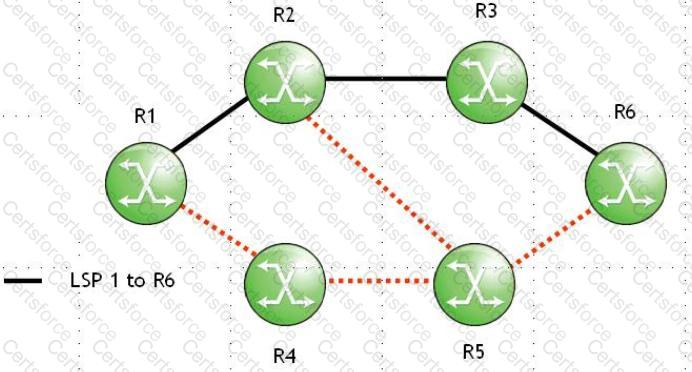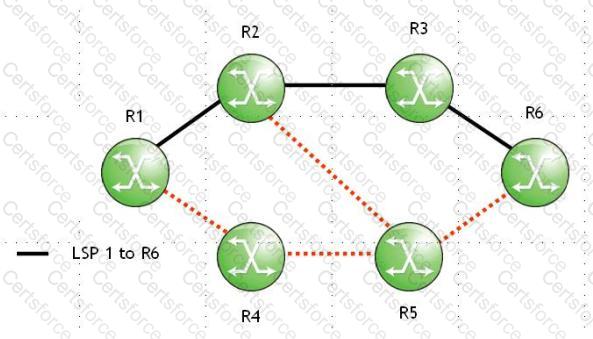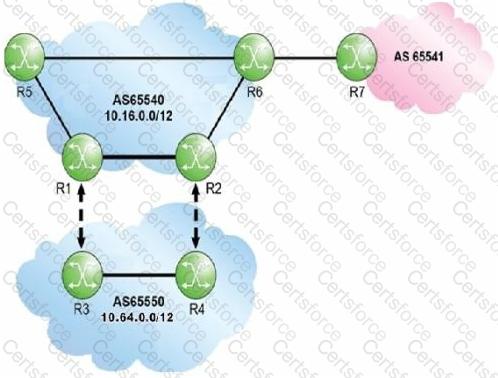What is the protocol number for OSPF in the IP header?
Click on the exhibit.

When router R1 forwards a PATH message to router R2, which of the following about the PATH message's IP header is TRUE?
Click on the exhibit.

LSP 1's link between routers R3 and R6 has failed, and the RESV state at router R3 has timed out. Which of the following actions will router R3 initiate?
If an Nokia 7750 SR is an iLER operating in pipe mode, which of the following regarding the TC field (EXP bits) is TRUE?
An OSPF router receives an update in which the sequence number, age, and checksum are the same as the entry already in the topological database. What action is taken by the router?
Which of the following devices assumes the active role during the establishment of an LDP session?
In an OSPF Hello packet what fields must match all neighbor routers on the segment? (Choose 3)
Which of the following statements best describes an OSPF type 3 LSA?
Click the exhibit.

AS 65550 owns CIDR block 10.64.0.0/12. Router R6 advertises the aggregate 10.64.0.0/12 to AS 65541 with "as-set" enabled. Which of the following is TRUE regarding the aggregate route received by router R7?
What class of attribute is Originator_ID?